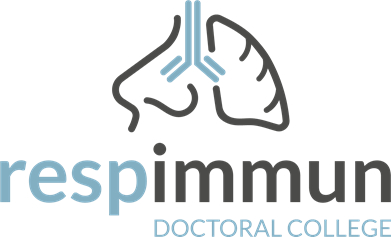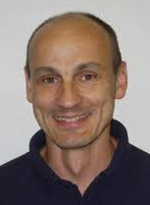
respimmun.at
• Böhm
• Brčić
• Heinemann
• Höfler
• Kargl
• Kwapiszewska
• Leithner
• Marsche
• Marsh
•Moissl-Eichinger
• Olschewski A
• Olschewski H
Strobl ⏩
• Tomazic
• Brčić
• Heinemann
• Höfler
• Kargl
• Kwapiszewska
• Leithner
• Marsche
• Marsh
•
• Olschewski A
• Olschewski H
Strobl ⏩
• Tomazic


The RESPImmun Faculty

|
Herbert STROBL, MD
Role of
|
|
Otto Loewi Research Centre, Division of Immunology and Pathophysiology, Medical University of Graz,
Heinrichstraße 31a, A-8010 Graz;
| |
| websites: [RESPImmun] | |
| • Profile ⏬ • Curriculum vitae • PhD students • Grants • Publications | |
Herbert Strobl is an immunologist and laboratory physician with a major interest in dendritic cell development, myelopoiesis and inflammation. His lab pioneered the generation of Langerhans cells in vitro from human hematopoietic progenitor cells in serum-free culture media. He also described that “left-shifted” band-stage neutrophils can “transdifferentiate&rdquoM into monocyte / macrophages after recruitment to inflammatory lesions. Within RESPImmun he closely collaborates with Grażyna Kwapiszewska, Leigh Marsh (pulmonary inflammation), Horst Olschewski, Gerald Höfler (human patient samples) and Ákos Heinemann (eosinophils and neutrophils in pulmonary inflammation).
Project
Project 12: Role ofCo-PI: Anna Birnhuber
Background
The transforming growth factor beta (Hypothesis and objectives
We hypothesize that- enhanced BMP signaling in NSCLC instructs tumor-infiltrating DCs to acquire PDL1, PDL2 and AXL resulting in an augmented immune-regulatory capacity of DCs;
- ligands of BMP receptors expressed in the tumor microenvironment instruct cells of the monocyte / DC lineage to acquire a tolerogenic phenotype potentially leading to tumor immune escape;
- differential expression of
TGF-β ligands and their receptors within the NSCLC tumor microenvironment lead to altered signal strength via the classicalTGF-β vs BMP signaling cascades in tumor-infiltrating leukocytes of the monocyte / DC lineage.
Methodology
In years 1 and 2, the PhD student will perform immunohistology stainings of primary human NSLC tumors for BMP7 and otherInput from collaborations within the RESPImmun programme
- Gerald Höfler and Horst Olschewski will provide lung specimen.
- With Julia Kargl we will perform phenotypic analyses of tumor associated leukocytes.
- With Leigh Marsh we will perform murine in vivo validation experiments and analysis of single cell RNA seq.